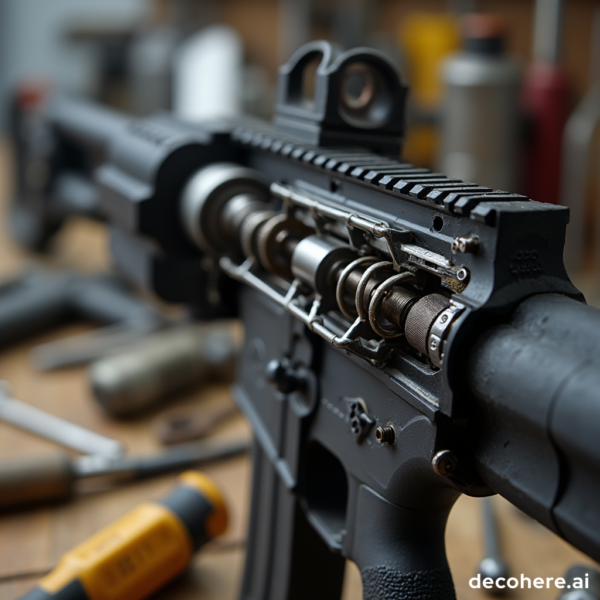Navigating the Competitive Landscape of Automotive Engine Suppliers and New Entrants
Understanding the Automotive Engine Supplier Market
The automotive manufacturing industry relies on a robust network of engine suppliers, each playing a crucial role in driving innovation, ensuring quality, and meeting the evolving demands of global automakers. As automakers seek to balance cost, performance, and regulatory compliance, the landscape for engine suppliers remains highly competitive and constantly evolving.
Current Number of Engine Suppliers
Globally, the automotive engine market is valued at approximately USD 84.44 billion in 2025 and is projected to reach nearly USD 94.79 billion by 2030 [4] . In the United States alone, the Automobile Engine & Parts Manufacturing industry comprises dozens of active businesses, with the largest companies commanding significant market share. Notable leaders include:

Source: alamy.com
- Ford Motor Company
- General Motors
- Stellantis N.V.
- Toyota Motor Corporation
- Volkswagen AG
- Hyundai Motor Group
While at least 7 major companies dominate the U.S. market , the global landscape includes a broader range of established suppliers, such as AB Volvo, Cummins Inc., Honda, Mitsubishi Heavy Industries, Renault, Scania AB, and others [1] [2] [4] . These firms supply engines for a variety of applications: passenger vehicles, commercial trucks, and industrial machinery.
In addition, the market for engine components -including pistons, valves, crankshafts, and camshafts-is supported by global suppliers such as Bosch, Denso, Continental AG, Mahle GmbH, Magna International, and Aisin Seiki [5] .
Key Characteristics of the Competitive Market
Engine suppliers compete on:
- Technological innovation (e.g., fuel efficiency improvements, hybrid/electric integration)
- Scalability and production capacity
- Compliance with global emission standards (such as Euro 7, U.S. EPA regulations)
- Cost competitiveness and supply chain reliability
Recent trends include a shift toward electrification, with many suppliers investing in hybrid and electric engine development, as well as the growing relevance of hydrogen and synthetic e-fuels in extending the life span of internal combustion engines [4] .
How Many Companies Are Prepared to Enter the Automotive Industry?
The automotive manufacturing sector presents significant opportunities but also high barriers to entry. The number of companies prepared to enter the industry is fluid, influenced by technological readiness, investment capacity, and evolving consumer and regulatory demands.
Entry Pathways for New Companies
Potential new entrants typically fall into these categories:
- Startups specializing in electric or hydrogen powertrains – These companies often leverage proprietary technology or niche expertise to attract OEM partnerships.
- Traditional suppliers diversifying into new engine technologies – Established firms in related fields (electronics, battery systems, software) may expand into engine supply as electrification advances.
- Joint ventures and strategic partnerships – Collaborations between technology providers and established automakers are a common route for new entrants to scale quickly and access established distribution channels.
Because the sector is highly capital-intensive and technologically demanding, the number of companies actively preparing to enter is smaller than in less regulated industries. However, market research firms and industry analysts regularly track dozens of emerging players at any given time, particularly in regions with strong government support for innovation (Asia-Pacific, Europe, North America) [2] [4] .
Steps for Entering the Automotive Engine Supply Chain
If your company is considering entry into the automotive engine sector, consider the following phased approach:
- Market Research and Feasibility Analysis Assess the target market segment (e.g., combustion engines, hybrid, electric, hydrogen), understand regulatory requirements, and benchmark leading competitors. Use reports from firms such as IBISWorld, Mordor Intelligence, and Towards Automotive for up-to-date market intelligence.
- Technology and Product Development Develop or license technology that meets (or exceeds) current emission and performance standards. Companies may partner with academic institutions or established R&D centers to accelerate innovation.
- Capital Investment and Funding Secure initial funding for development and pilot production. Options include venture capital, government grants (especially for sustainable technologies), or strategic investors.
- Certification and Compliance Ensure your products comply with local and international standards. This may involve working with regulatory agencies and conducting rigorous testing.
- OEM Partnership Development Initiate discussions with vehicle manufacturers and Tier 1 suppliers. Demonstrating a proven track record or successful pilot projects increases credibility.
- Scaling Production and Supply Chain Integration Invest in scalable production capabilities and robust quality control systems to meet large-volume requirements.
For companies seeking guidance or support, you can contact your regional automotive industry association, such as the Original Equipment Suppliers Association (OESA) in the United States, or consult with established market research firms for tailored entry strategies.
Challenges Facing New Entrants
Entering the automotive engine supply market is challenging due to:
- High capital and R&D costs
- Stringent regulatory compliance
- Lengthy qualification processes with automakers
- Established supplier relationships
- Rapid technological change (especially electrification and automation)
Despite these barriers, some successful examples include startups specializing in electric powertrains forming joint ventures with major automakers, traditional engine suppliers pivoting to hydrogen or synthetic fuel engines, and electronics firms leveraging their expertise to become Tier 1 suppliers for hybrid and electric vehicle components.
Accessing Industry Opportunities and Information
If you are looking to identify suppliers or enter as a new competitor, consider these practical steps:
- Consult industry directories published by organizations like the Automotive Aftermarket Suppliers Association (AASA) or Automotive Industry Action Group (AIAG) .
- Engage with regional trade groups, such as the European Association of Automotive Suppliers (CLEPA) or the Japan Automobile Manufacturers Association (JAMA) , for networking and regulatory updates.
- Monitor official government procurement portals for supplier opportunities (for example, search for government contracts on your country’s official procurement website).
- Attend major automotive trade shows and expos, which often provide matchmaking events and supplier directories.
- For compliance and regulatory guidance, contact your local department of transportation or environmental protection agency.
While some of these organizations maintain online directories of members and suppliers, access to detailed contact information or business leads may require membership or purchase of industry reports. For up-to-date statistics and company lists, it is recommended to utilize established market research providers whose reports can be ordered directly through their official websites.

Source: alamy.com
Key Takeaways
The automotive engine supply industry is characterized by a handful of global giants and a dynamic pool of new entrants, especially in emerging technologies. While the number of current suppliers is relatively concentrated, dozens of companies are preparing or positioning themselves to enter the market-primarily in electrification, hydrogen, and advanced engine management systems. Success for new entrants depends on robust innovation, significant investment, and strong partnerships with established industry players. As the sector evolves, staying informed through industry associations, research reports, and regulatory agencies is essential for identifying and capitalizing on new opportunities.
References
- [1] IBISWorld (2025). Automobile Engine & Parts Manufacturing in the US Industry Report.
- [2] Consegic Business Intelligence (2025). Automotive Engine Market Size, Share, Trends & Growth Forecast.
- [3] MarkLines (2025). USA – Flash report, Automotive sales volume ranking.
- [4] Mordor Intelligence (2025). Automotive Engine Market Size, Trends, Forecast Report 2025 – 2030.
- [5] GlobeNewswire (2025). Automotive Engine Components Market Set to Grow at 4.54%.



